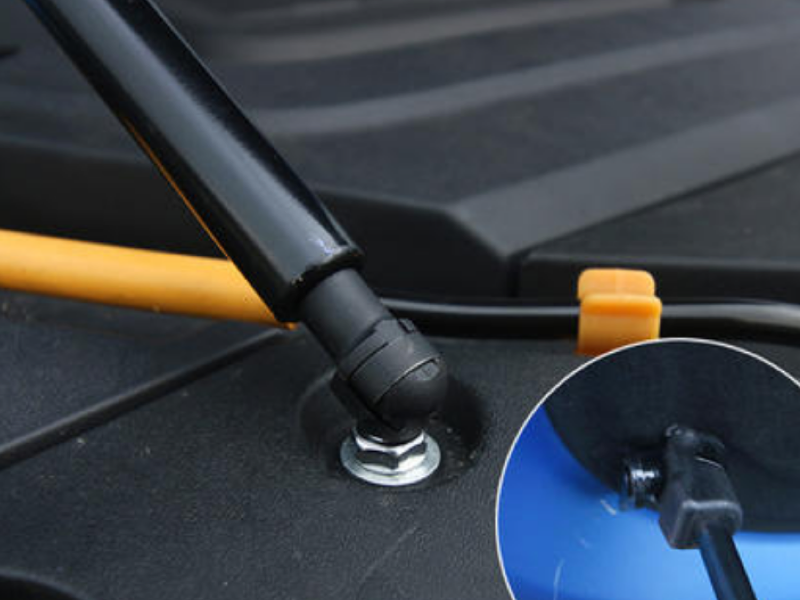
News
Gas spring is an industrial accessory that can provide support, cushioning, braking, height adjustment, and angle adjustment functions. It consists of the following parts: pressure cylinder, piston rod, piston, sealing guide sleeve, filling material (inert gas or oil-gas mixture), control components inside and outside the cylinder (referring to controllable gas springs), and joints.
The working principle is to fill a closed pressure cylinder with inert gas or a mixture of oil and gas, so that the pressure inside the chamber is several times or tens of times higher than atmospheric pressure. The movement of the piston rod is achieved by using the pressure difference generated by the cross-sectional area of the piston rod being smaller than that of the piston. Due to fundamental differences in principle, gas springs have significant advantages over ordinary springs: relatively slow speed, minimal dynamic force changes (generally within 1:1.2), and easy control; The disadvantage is that the relative volume is not as small as that of a coil spring, the cost is high, and the lifespan is relatively short.
According to their characteristics and different application fields, gas springs are also known as support rods, angle adjusters, air pressure rods, dampers, etc. According to the structure and function of gas springs, there are several types of gas springs, including free type gas springs, self-locking gas springs, traction gas springs, random stop gas springs, swivel chair gas springs, air pressure rods, dampers, etc. At present, this product has a wide range of applications in fields such as automotive, aviation, medical equipment, furniture, and machinery manufacturing.
Related News
-
 Gas spring is an industrial accessory that can provide support, cushioning, braking, height adjustment, and angle adjustment functions. It consists of the following parts: pressure cylinder, piston rod, piston, sealing guide sleeve, filling material (inert gas or oil-gas mixture), control components
Gas spring is an industrial accessory that can provide support, cushioning, braking, height adjustment, and angle adjustment functions. It consists of the following parts: pressure cylinder, piston rod, piston, sealing guide sleeve, filling material (inert gas or oil-gas mixture), control components -
 If a set of pneumatic devices is not maintained properly, they will be damaged prematurely or fail frequently, greatly shortening the service life of the device. When maintaining pneumatic devices, timely measures should be taken based on the signs of accidents discovered to reduce and prevent the o
If a set of pneumatic devices is not maintained properly, they will be damaged prematurely or fail frequently, greatly shortening the service life of the device. When maintaining pneumatic devices, timely measures should be taken based on the signs of accidents discovered to reduce and prevent the o -
 As a form of power transmission or energy conversion device, pneumatic components are widely used in our daily lives. Its advantages of energy conservation, environmental protection, low cost, and simple structure make it very suitable in the industrial field and widely used in various machinery and
As a form of power transmission or energy conversion device, pneumatic components are widely used in our daily lives. Its advantages of energy conservation, environmental protection, low cost, and simple structure make it very suitable in the industrial field and widely used in various machinery and







